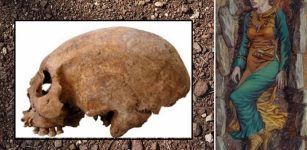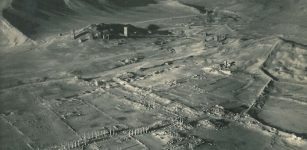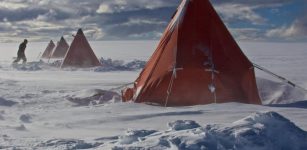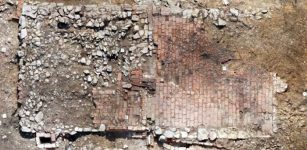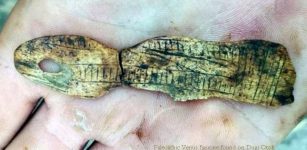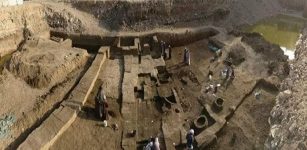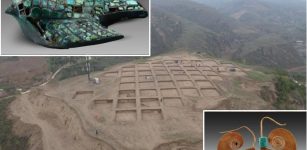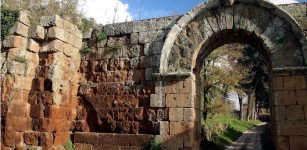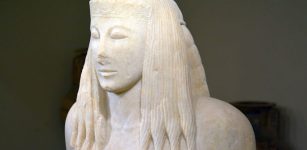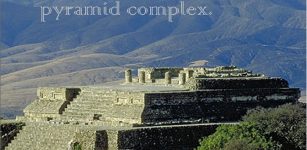6,000-Year-Old Earth Ovens Discovered In Washington State
Jan Bartek - AncientPages.com - Ancient Tribal earth ovens built long before the Egyptian pyramids are being excavated as part of the first archeological project made public by the Kalispel Tribe of Indians.
Conducted in collaboration with Washington State University archeologists, the excavation reveals new insights into the foods the Kalispel people have been preparing and eating in the Inland Northwest for the last 5,000 years.
Linda McNulty Perez, a doctoral student at Princeton University, uses a brush to gently remove dirt from a piece of wood that had been buried in dirt below ground level during a collaborative archeological field school run by the Kalispel Tribe, WSU, and Far Western Anthropological Research Group.
“As a Tribe, we’ve never shared this kind of historical excavation experience with the public,” said Kalispel Tribal elder Shirley Blackbear. “But I think it is important for non-Natives to learn and understand more about our Tribe. Our history and traditions are very rich and important to us. Cooking techniques have been passed down from generation to generation.”
The earth ovens were discovered after the Kalispel Tribe purchased land near Newport to accommodate the need for additional Tribal housing near the Reservation. Now in its third week, the excavation has uncovered the remnants of several of the ovens, one of which radiocarbon dating suggests is 5,000 years old.
A team of professional archeologists and fourth-year students participating in a WSU archeological field school is currently working to delineate the features and investigate any potential changes in their size and shape over time. Soil samples are also being collected and analyzed in the lab in the hopes of identifying charred seeds, nuts and even bits of protein that could paint a clearer picture of the diet and food processing techniques used by ancient Tribal people living on the banks of the Pend Oreille River.
The oven remains, and other discovered artifacts will ultimately be carefully removed from the ground to make way for essential Tribal housing.
“The broader level question we are asking is why were the people of this region picking this particular place to cook their food at again and again over a period of thousands of years?” said Shannon Tushingham, a WSU professor of archeology who is leading the archeological field school in collaboration with the Kalispel Tribe.
“Earth ovens have been excavated in this area before, but now in 2023 we have all these wonderful new technologies that give us the ability to better determine what types of food were being eaten and how they were prepared.”
One of the main foods the archeologists hope to learn more about is camas, a small flowering plant with roots that can be cooked fresh or ground into flour for baking over several days. While the Tribe has preserved the tradition of baking camas bread by passing it down from generation to generation, not much is known about the oven technology they used before 3,000 years ago.
Another hope of the archeological team is to identify protein residues from animals such as bighorn sheep, which currently aren’t found in the region, but previous research suggests may have been present or traded for.
The site of an excavation of 5,000-year-old earth ovens being done as part of a collaborative archeological field school run by the Kalispel Tribe, WSU, and Far Western Anthropological Research Group.
“When we combine what we find from archeological investigations like this with environmental reconstructions and ethnographic data we can begin to start getting a much clearer picture,” said Kevin Lyons, Kalispel Tribal archaeologist.
Traditionally, Tribes have not always been consulted when it comes to archeological digs, especially when the property is owned by private non-Tribal landowners. However, since the early 1990s, the Kalispel Tribe has grown its own capacity to answer questions about its past as it sees fit, employing archaeologists of its own to preserve Tribal history.
Lyons said Tribal leadership decided to partner with WSU experts on the project given its scale and scientific complexity.
“This is one of those rare occasions where the Tribe, with its own expertise, could do this on its own, but we would wind up doing it to the exclusion of everything else, and we already have other standing obligations,” he said in a press statement. “We are partnering with WSU archeologists on this project because we have a long tradition of working with them and know that they will do justice to the Tribe’s history and its tangible footprint.”
That tradition of collaboration stretches back almost a century to the work of Allan H. Smith, former academic vice president of WSU, who visited the Kalispel reservation between 1936-1938 to question and observe Kalispel elders at the old village site. He ultimately amassed an 1800-page manuscript on the Kalispel people that played an important role in adjudicating the aboriginal claims of Tribal peoples in the region when congress established the Indian Claims Commission in 1947.
Fast forward to today and close collaboration between the Kalispel Tribe and WSU continues in the form of the archeological field school led by Tushingham. The school is providing fourth-year students with the first-hand experience they will need to pursue careers in professional archeology.
See also: More Archaeology News
“It is really about teaching students the archeological skills they will need to get jobs in the growing field of cultural resource management,” Tushingham said. “We are training the next generation of professional archeologists how to work with tribal communities and interact with them in a meaningful and professional way. We are honored to be hosted by the Kalispel Tribe.”
Written by Jan Bartek - AncientPages.com Staff Writer



